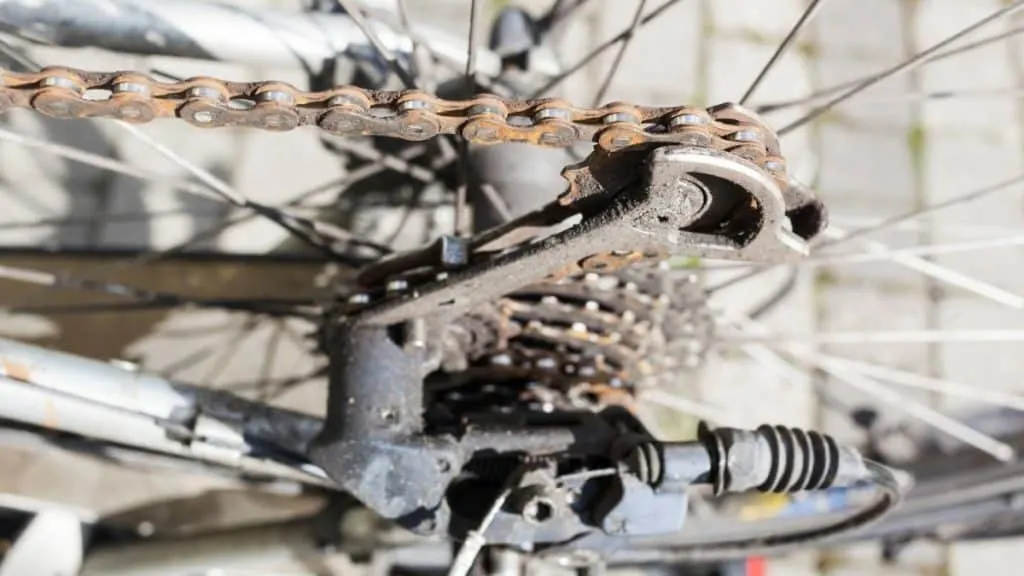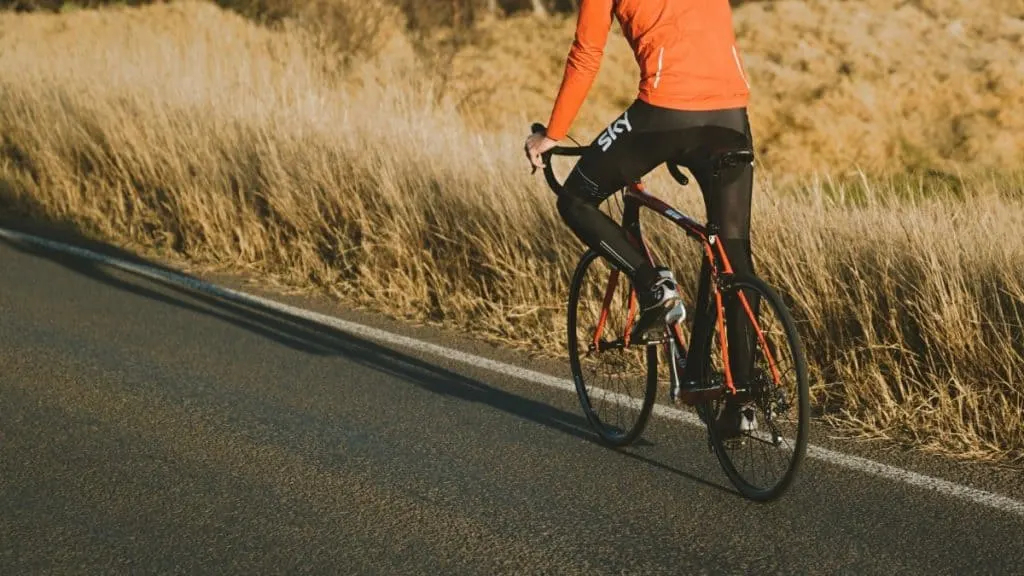
The lifespan of a bicycle varies, but knowing something such as when the gears of your bike are worn out can help maximize its longevity. There are certain signs to look out for that can indicate when your bike gear need changing…
Visual wear and tear to the chain, cassette, and chainrings are a good indication the gears of your bike may be worn out. The teeth on your bike cogs also become flatter when the part is wearing down, and you will feel resistance when changing gears during a ride.
These are typically the best indicators of worn-out gears, and it’s necessary to keep track of your gears for not only the longevity of your bike but for your safety as a rider.
In this article, we’ll discuss ways to make sure your bike is in good shape and what you need to know for replacements and maintenance when it comes to your bike gears.
How Do I Know My Gears are Worn Out?
For some riders, it’s an instinct to replace bike gears often, but for the casual riders, it may take a couple of signs to realize your gears have run their course.
Several factors can go into knowing when it’s time to change your bike gears. Some signs are visual, while others come through physically riding the bike. Let’s take a look at 5 of these signs in detail:
- Rust: A bike’s parts, such as its chain, rims, gears, and cogs, are typically made out of stainless steel. Steel can easily rust under the right conditions, and the rust will lead to damaged parts.
- Mileage: While not every bike rider will keep track of their total mileage on their bike, having an idea of its usage and knowing that a 10-speed change is typically good for 1,500-3,000 miles is an organized way to know your gears are worn.
- Bike Cog’s Teeth: The sharp edges of your bike cog become flat over time with enough usage. When you see the teeth of the cog start to bend all the way in, your cog needs to be replaced.
- Physically Riding: Perhaps the biggest indicator of worn-out gears is your experience while riding. When changing gears gives you more resistance, and your ride feels unstable, you’ll physically feel the effects of damaged bike gear.
- Noise: In some cases, you will hear a grinding noise during your ride. This is perhaps the most obvious indicator that your gears are grinding and damaging themselves during your ride.
These are some of the more obvious ways to tell your gears are worn out, but if you’re not sure about it, you can always ask for a second opinion at a bicycle store or repair shop before making any decisions.
How to Replace Your Gears
We’re not all handy and feel comfortable repairing our bikes, but if your gears are worn out, there are plenty of options for you to choose from.
Going to a Repair Shop to Replace Bike Gears
Typically, most shops will charge you $25-$75 to replace gears for regular cruiser bikes. If you’re riding a more high-end bike, however, the price can skyrocket to upwards of $250-$300.
Another bonus when going to a repair shop, is that upon inspection, you’ll know if anything else on your bike needs replacing.
For a full break down of how much it would cost to get your bicycle gears replaced or repaired, check out my article here.
Replacing Bike Gears Yourself at Home
Most bike repairs can be done manually at your own home. If you have the right parts and tools, it’s fairly simple to do. You can check out a YouTube video like this one:
Alternatively, check out my article “How to Replace your Bike Gears” for step by step instructions.
Or if your gears only need a few adjustments, here’s a helpful guide I wrote about adjusting your bike gear and whether or not it’s okay to adjust them upside down.
The average lifespan of a bike that’s used day-to-day varies but can go as far as five years in most cases, so the need to replace your gears does not mean your bike is completely worn out.
Increasing your Bicycle Gears Lifespan
As with anything else in our lives, the key to longevity is to take care of your possessions. There are plenty of ways to keep your bike in great condition and prolong the need for repairs.
Your chain is one of the most essential parts of your bike, and it works in tandem with the rest of your bike parts to perform efficiently.
It is recommended that you clean and lubricate your chain once every 2-3 rides. If your bike chain is working smoothly, you will feel it during your ride as you change gears.
QUICK TIP: Check out my article “How to Keep your Bike Chain in Peak Condition” for a detailed guide on how make sure your chain is always giving you a smooth ride.
Another critical factor is to prevent rust. Rust will accumulate on your bike when it’s stored away in bad conditions such as a garage, storage unit, or closet.
A lack of usage will also factor in. To prevent rust, you should make sure to:
- frequently use your bike
- store your bike in optimal conditions
- consistently clean your bike
TIP: For the best bike storage solutions, check out my Recommended Gear section here.
For your gears specifically, consider going easy on constantly changing gears during your rides. Use the necessary gear on whatever terrain you are riding on, but focus on not overusing your gears so that they’re not overworked and you run less risk of wearing them out quicker.
Testing your Bike Gears

Making sure your gears are intact is an obvious must when it comes to making sure you have a great riding experience. If you’ve recently bought a new bike or had your gears on an older bike repaired, make sure to test your gears out before going on any rough roads or terrains.
A great way to test your gears out is to go to an empty parking lot or a secluded area and test out your bike on each gear. You want your bike to be performing at an optimal level and you want to make sure it can get you to and from your destination safely.
Just like you would with a new car, you should test drive your bike to make sure it’s working up to the standard you expect it to work at. To get the most out of your bike, test out each gear, and see which ones you’re most comfortable riding on.
Importance of Using Bike Gears Correctly
While not every bicycle on the market comes with gears, it’s an important feature that anyone looking for anything other than a cruiser bike should look for.
If you own a bike with gears, you probably use it on different kinds of terrain. No one single gear is able to maintain a smooth ride across all terrains and conditions.
Changing gears will allow you to ride as smooth as possible, whether you’re riding on your sidewalk or mountain biking up and down a course.
Making sure your gears are working properly is especially important for bike riders that frequent rough terrain and gradients because if your gears are worn out, the experience you’re accustomed to when your gears are intact will give you a false sense of confidence and may lead to a turbulent, perhaps hazardous, ride.
It’s also a good idea to make use of your full range of gears rather than only sticking to the same gear. This will give your bike an even level of wear and tear and will make it last much longer, as opposed to only one part of it simply wearing out too quickly.
Keeping an eye out for worn-out gears will help you get the most out of your riding experience and ensure your safety.
Keep a close eye on the state of your bike parts by making sure they’re clean, healthy, and working well together like the well-oiled machine you know it can be. If your rides aren’t going as smoothly as they were when you first bought your bike, don’t hesitate to check out what’s causing the issue.
Make sure your cogs aren’t bending, your chain, cassette, and chainrings are clean, and that your bike isn’t fighting you back when you’re out riding. These are all signs of a healthy bike and healthy bike gears.
When you buy your bike, you’re investing in something that you hope will last you a few years. Whether it’s for leisure, sport, or transportation, you should do whatever you can to prolong the life of your bike and get the most out of your investment.
Check out my Bike Maintenance section in the menu bar for more information on how to maintain your bike properly.
